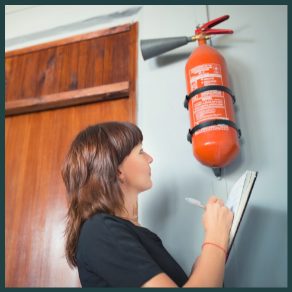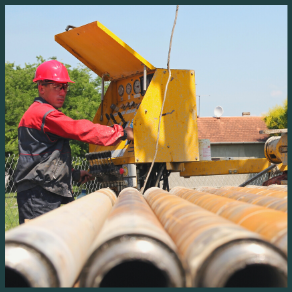Find Your Perfect School
In 1635, Puritan settlers established the country’s first public school in Massachusetts and, thus, started the idea of education being a great equalizer. In 1848, the Bay State’s first-ever education secretary – and the first in the United States, too – Horace Mann further cemented the ideal with his motto that education is a “great equalizer of the conditions of men.”
No Longer Inferior…
As times changed, education became subject to descriptors that made education inferior to other forms. This was, unfortunately, true for “trade education,” “vocational education,” and “technical education” which were seen as inferior to bachelor’s degrees. The designation “higher education” given to four-year colleges and universities also spread the idea of a trade education’s inferiority.
Fortunately, trade school education advocates have significantly shaken off the inferior stigma! Even mainstream media that were prone to overlook the excellent value of trade, technology, and technical programs and schools have made a 180-degree turn.
With the rising cost of traditional college education, more and more individuals are turning to trade schools as an alternative for career preparation. However, contrary to popular belief, trade school education can lead to high-paying and in-demand job opportunities.
Trade schools are now hailed as harbingers of hope for individuals who want the fastest route possible to gainful employment, as well as a starting point for post-secondary education reforms.
Quick Summarization:
Gone are the days when a trade school educational diploma is “not as good as” a traditional four-year bachelor’s degree. Of course, depending on your end goal, sometimes an undergraduate or graduate degree is required. But, if not, there are plenty of trades that provide a lucrative living and opportunities for career advancement.
Quick Peek at the Top 10 Highest Paying Trades
- Air Traffic Controllers
- Commercial Pilots
- Power Plant Operators, Distributors, and Dispatchers
- Elevator Installers and Repairer
- Radiation Therapists
- Nuclear Technicians
- Nuclear Medicine Technologists
- Web Developers
- Dental Hygienists
- Pile Driver Operators
Traditional College Costs On The Rise…
Furthermore, the rising costs of a four-year college degree combined with stagnant wages were the catalyst for change. In the 30 years between 1988 and 2018, college tuition increased by a whopping 213% at public institutions and 129% at private universities. But the average wages for the majority of Americans barely moved, if not remained stagnant.
Then there’s the unemployment rate which increased from 5.6% in 1990 to 8.1% in 2020. While the coronavirus pandemic can be partly blamed for it, young college graduates didn’t have the expected opportunities. The class of 2020, for example, has 45% of their ranks unemployed to date.
Simultaneously, there’s a marked national scarcity of skilled trade workers! Trade jobs are being left vacant for about a month because there aren’t many qualified workers. As a consequence of supply and demand, the result is increased wages for numerous trade jobs and more incentives from employers that keep old workers and attract new employees.
The Lesson Here Is Obvious…
You can benefit from a trade school education, both financially and professionally!
Many trade organizations are also doing their part in attracting new blood into the industry. The Build Your Career (BYC) program by the Carolinas Association of General Contractors, for instance, has industry-academe partnerships. Leaders in the construction industry connect with schools and educate students, parents, and educators about the benefits of a construction career. Their pitch includes the short training time and attractive wages for crane operators and welders, among others.
Use these “Jump-Tos” to find a topic that interests you! Go ahead… There are 40 to choose from!
- Air Traffic Controllers
- Commercial Pilots
- Power Plant Operators, Distributors, and Dispatchers
- Elevator Installers and Repairer
- Radiation Therapists
- Nuclear Technicians
- Nuclear Medicine Technologists
- Web Developers
- Dental Hygienists
- Pile Driver Operators
- Commercial Divers
- Diagnostic Medical Sonographers and Cardiovascular Technicians
- Aerospace Engineering and Operations Technologists and Technicians
- Claims Adjusters, Appraisers, and Examiners
- Electric Power Line Installer and Repairer
- Police and Detectives
- Aircraft Mechanics/Avionics Technicians
- Boilermakers
- Railroad Workers
- Radiologic Technologists and MRI Technologists
- Building and Home Inspectors
- Respiratory Therapists
- Fire Inspectors and Investigators
- Telecommunications Equipment Installers and Repairers
- Occupational Therapy Assistants
- Electro-Mechanical Technicians
- Architectural and Civil Drafters
- Rotary Drill Operators
- Funeral Service Workers
- Electricians
- Plumbers, Pipefitters, and Steamfitters
- Wind Turbine Technicians
- Computer Support Technicians
- Civil Engineering Technicians
- Ironworkers
- Paralegals and Legal Assistants
- HVACR Technicians
- Geological and Hydrologic Technicians
- Diesel Service Technicians
- Carpenters
40 Highest Paying Jobs With A Trade School Education
Air Traffic Controllers
Median annual salary: $132,250
License/Certification: Air Traffic Control Tower Operator Certificate
Getting an associate degree at an FAA-approved Air Traffic Collegiate Training Initiative (AT-CTI) program is the shortest path toward becoming an air traffic controller. The aviation-centric coursework includes subjects on airspaces, federal regulations, and clearances that prepare students for the challenging work ahead.
Many also get the appropriate training at the Oklahoma City-based FAA Academy, with the duration of training depending on your background.
Up to three years of work experience is necessary for these programs, and the less postsecondary experience there is, the more work experience is required. After graduation, trainees become developmental controllers who perform basic jobs, including providing pilots with airport and flight information. The training is vital in becoming a certified air traffic controller.
The primary duties of an air traffic controller include:
- Ensure that aircraft maintain their safe distances from each other, both in the air and on the ground
- Issue instructions for landing and takeoff to pilots
- Provide vital information about runway closures, weather conditions, and others that will affect the pilots’ decision-making process
- Coordinate with other airport personnel in the event of emergencies
Specializations include tower controllers, approach and departure controllers, and en route controllers. Further on-the-job training and work experience are vital for both specialization and career advancement.
FAQs and Top Schools: How To Become an Air Traffic Controller
Commercial Pilots
Median annual salary: $148,900
License/certificate: Commercial pilot license
Emphasis must be made on the differences between airline pilots and commercial pilots. For one thing, airline pilots must have a bachelor’s degree, while commercial pilots may only hold a high school diploma or an associate’s. Both, however, must have the appropriate training and license.
Commercial pilots are engaged in unscheduled flight activities, while airline pilots are usually involved in scheduled flight activities, usually for airlines. The unscheduled flights include aerial tours, charter flights, other aerial applications, and other non-flight tasks, including aircraft maintenance.
The typical route for commercial pilots starts by earning a student pilot certificate, a private pilot license, and an instrument rating followed by a commercial pilot license. Start your journey by completing a flight training program at an independent FAA-certified school, which usually requires a high school diploma for admission. Flight training includes 6-8 weeks of ground training followed by in-the-air training with instructors.
Depending on your preference, pick between a two-year program at four-year universities or programs offered by small fixed base operators (FBO). Examples of the former include the Lone Star College Professional Pilot Program and Cypress College’s associate degree program.
FAQs and Top Schools: How To Become a Commercial Pilot
Power Plant Operators, Distributors, and Dispatchers
Median annual salary: $97,570
License/Certification: US Nuclear Regulatory Commission license or NERC certification
If you obtained a high school diploma or the equivalent, you could apply to power plant operators, distributors, and dispatchers trade programs for a better chance at the best jobs. The Williamson College of the Trades‘ Associate in Specialized Technology Degree program is a great example.
Interested individuals should also consider passing the Edison Electric Institute’s Power Plant Maintenance and Plant Operator exams. Many employers prefer applicants who have passed the series of tests since these measure mathematical ability, reading comprehension, and understanding of electrical and mechanical concepts. Due to the highly technical nature of the job, applicants must have robust math and science backgrounds.
Aside from the trade training and Edison test, aspiring power plant operators, distributors, and dispatchers must undergo rigorous on-the-training involving technical instruction and hands-on work. Long-term training is a must to become fully qualified to pursue the coveted NRC license or NERC certification.
The primary duties include safe, effective, and efficient generation, distribution, and electric power management. The general tasks include:
- Monitor and manage power-generating equipment
- Read meters, charts, and gauges for monitoring purposes
- Troubleshoot issues and make appropriate decisions
Specializations are also possible, and these include nuclear power reactor operators, power distributors and dispatchers, and power plant, operators.
FAQs and Top Schools: How To Become a Power Plant Operator or Power Distributor and Dispatcher
Elevator Installers and Repairer
Median annual salary: $99,000
License/Certification: License depending on state or certification (CET, CAT, or QEI)
An Associate in Electronics Engineering Technology degree or the like may be the start of a career as an elevator installer and repairer, also known as an elevator mechanic. But most learn their trade through apprenticeship programs sponsored by colleges, industry associations, and unions, even by independent contractors. These last between four and five years and involve a combination of technical instruction and paid on-the-job training.
Admission into these apprenticeship programs typically only requires a high school diploma or its equivalent. But a strong background in math, science, and English is a must, as is the willingness to get your hands dirty. The technical training includes blueprint reading, work safety, and elevator maintenance.
Depending on where you live, either a state-issued license or a certification will be required. New York and Ohio are a few examples of states with licensure systems in place for elevator mechanics. The CET, CAT, and QEI certifications are optional in many states, but it’s highly recommended for job competitiveness and career advancement.
Elevator installers and mechanics perform a wide range of tasks from installing to fixing issues associated with elevators, and moving walkways and elevators.
FAQs and Top Schools: How To Become an Elevator and Escalator Installer and Repairer
Radiation Therapists
Median annual salary: $89,530
License/Certification: ARRT certification and license depending on the state
Radiation therapists are valuable team members in clinics, hospitals, and diagnostic centers, among other healthcare facilities. As part of an oncology team, they work with specialists like radiation oncologists, nurses, and medical physicists to treat cancer and other diseases. Their main job is the safe administration of radiation treatments, including:
- Educating patients and their families about their specific radiation treatment
- Deciding with other healthcare professionals about the location, dosage, and duration of treatment
- Operating the radiation equipment, such as linear accelerators, including its calibration and maintenance
- Monitoring patients for adverse reactions to treatment
- Keeping detailed patient records
Interested individuals can start a career as a radiation therapist by completing an associate in radiation therapy degree. Colleges that offer it include Amarillo College, Florida State College, and Thomas Edison State University. Many 12-month certification programs are also available, but these are commonly intended for specialization among diagnostic radiographers.
After completion of an ARRT-accredited program, graduates can apply for certification as registered radiation therapists. Most states require licensure, and these include California, Florida, and Connecticut.
FAQs and Top Schools: How To Become a Radiation Therapist
Nuclear Technicians
Median annual salary: $100,420
License/Certification: IRRSP or RRPT
Many nuclear technicians start their rewarding careers by completing an associate degree in nuclear technology or nuclear science. In many public institutions, these programs are offered if you want quality education at a reasonable cost, such as Salem Community College and Augusta Technical College.
Many also acquire relevant work experience by serving in military branches, particularly the US Navy. The Nuclear Power School, a military technical school in Goose Creek, South Carolina, is the training ground for many aspiring nuclear technicians and technologists.
Both paths, nonetheless, involve a rigorous curriculum characterized by intensive studies about math and physics, applied hydraulics and nuclear physics, as well as reactor dynamics and principles.
Students learn through a combination of fast-paced, extensive classroom lectures and hands-on training under the guidance of experienced teachers. Training duration depends on students’ work experience so programs can last from six months to two years.
Certifications and security clearances are a must in the field due to the sensitive nature of the job. Duties include:
- Operation and maintenance of nuclear equipment, including radiation monitoring equipment
- Measurement of the types and levels of radiation in power plants and nuclear sites
- Collection of water, air, and soil samples for radioactive contamination testing
Specializations include radiation protection technicians, operating technicians, and nuclear technicians.
FAQs and Top Schools: How To Become a Nuclear Technician
Nuclear Medicine Technologists
Median annual salary: $85,300
License/Certification: Certification from ARRT or NMTCB and a state-issued license
Becoming a nuclear medicine technologist can start with an associate in a nuclear medicine technology degree earned from accredited schools. Bellevue College and Broward College are among these schools. The program duration varies from 12 to 24 months, but the curriculum usually includes human anatomy, chemistry and physics, and radioactive drugs.
Many nuclear medicine technologists have also completed an associate degree in a related field, such as nursing or radiologic technology. Then, it’s a natural progression toward a 12-month nuclear medicine technology certificate program.
Note that the best programs have been vetted by the Joint Review Committee on Educational Programs in Nuclear Medicine Technology (JRCNMT). Employers may prefer the accreditation, too, and it may be necessary when applying for ARRT or NMTCB certification, as well as a state license.
Other certifications that demonstrate above-par competency include basic life support, cardiopulmonary resuscitation, and advanced cardiovascular life support certifications.
Once certified and licensed, nuclear medicine technologists perform these primary duties:
- Prepare and administer radioactive drugs to patients upon the advice of physicians
- Follow safety procedures in their job
- Operate and maintain related equipment
- Keep detailed patient records
There are several types of nuclear medicine technologists, too. These include nuclear medicine computed tomography technologists, positron emission tomography technologists, and nuclear cardiology technologists.
FAQs and Top Schools: How To Become a Nuclear Medicine Technologist
Web Developers
Median annual salary: $80,730
License/Certification: None required
Many successful web developers built their careers on an associate degree in computer science or computer programming, among other related fields. Career advancement is possible through extensive work experience, an impressive work portfolio, and perhaps a stack of certifications.
The formal training prepares aspiring web developers for challenging yet rewarding jobs in the publishing industry, consulting firms, and public relations companies. Their specialized skillset includes mastery of HTML programming, SQL and JavaScript, and graphic arts and digital design.
With a projected 16% increase (2022-2032) in employment, becoming a web developer makes great sense! Plus, the possibility of taking on exciting projects, perhaps making a difference, in the comfort of an office makes it more attractive.
Web developers create, maintain, and troubleshoot websites for clients. These primary duties involve responsibilities like:
- Discuss the parameters of websites with clients and management
- Create code using HTML or XML for the websites
- Create and test the website’s functionality, including its interfaces, applications, and menus
- Create or aid in the creation of content for the websites
There’s also the opportunity to choose a specialization that can increase your value as an employee or client if you’re a self-employed web developer. Specializations include back-end web developers, front-end web developers, web admins, and web and digital interface designers.
FAQs and Top Schools: How To Become a Web Developer
Dental Hygienists
Median annual salary: $81,400
License/Certification: License and CPR certification
The quickest path toward a dental hygienist license is an associate degree in dental hygiene, usually a two-year to a three-year program offered by community colleges and universities. Be sure to check their accreditation from the American Dental Association’s Commission on Dental Accreditation. Examples include New York University and North Dakota State College of Science.
The coursework includes anatomy and physiology, periodontics, and medical ethics, meaning that applicants to these programs must have a strong background in math, biology, and chemistry. Classroom lectures and hands-on training through clinical rotations are vital in the learning process.
All states in the US require dental hygienists to be licensed. Aside from the associate degree, the licensure requirements can include passing written and clinical exams. Continuing education requirements, including CPR certification, are also required.
With a 7% employment growth (2022-2032), the occupation attracts people interested in gaining gainful employment within a shorter period and at less expense. The duties are fairly safe, too, considering that these are performed inside a clinic and with proper protective equipment.
Dental hygienists are part of a team of healthcare professionals that ensure good oral health among children and adults. Their main duties include:
- Assessment of oral health and report it to the dentists
- Removal of stains, plaque, and tartar from teeth
- Take dental x-rays
- Keep patient records
Educating patients about oral health, such as correct brushing and flossing, is also part of the job.
FAQs and Top Schools: How To Become a Dental Hygienist
Pile Driver Operators
Median annual salary: $70,220
License/Certification: State and city license and NCCCO certification
Pile driver operators operate crawler treads, skids, and barges to drive pilings necessary to construct bridges, retaining walls, piers, and buildings. Their occupation involves working on a wide range of projects, from large-scale state-sponsored infrastructure projects to standard work sites.
Their skillset includes complicated operating machinery and excellent physical and mental coordination, communication, and quick thinking skills.
With high pay and above-average employment growth (4%), it’s an attractive occupation indeed! There are a few paths toward becoming a pile driver operator, too:
- Complete a trade school program for pile-driver operators. Take a look at Santiago Canyon College‘s training program.
- Undergo an apprenticeship program offered by companies and organizations. Look into the three-year International Union of Operating Engineers program.
- Consider the National Commission for the Certification of Crane Operators certificate programs dedicated to aspiring pile driver operators. The certification is optional, but it can be a competitive edge when getting hired.
Many states require pile-driver operators to possess a crane license. New York City, New Orleans, Chicago, and Omaha are among the cities that also require them to have special crane licensure.
FAQs and Top Schools: How To Become a Pile Driver
Commercial Divers
Median annual salary: $85,630
License/Certification: TWIC card
Getting a postsecondary certification or an associate degree is recommended for aspiring commercial divers. The Association of Commercial Diving Educators (ACDE) is the accreditation organization for diving schools. Examples include the National University Polytechnic Institute, Minnesota Commercial Diver Training Center, and South Central Louisiana Technical College.
The Association of Diving Contractors International (ADCI) also has a list of schools worldwide offering professional training for aspiring commercial divers. In the US, the Divers Institute of Technology offers an excellent program.
Take note that aspiring commercial divers aren’t required to complete any of these programs, but their comprehensive curriculum and rigorous training are excellent preparations for the job. The courses include salvage operations, hydraulics, underwater safety, underwater welding, and scuba diving.
Commercial divers have to pass a physical exam and secure a TWIC card, a pass to gain access to the country’s secure maritime facilities. After the diver’s training, the next step is finding work as a tender or diver’s assistant for a few years to gain sufficient professional experience.
On-the-job learning continues, and it can involve learning new skills and facing unorthodox situations that require calm under pressure.
The actual work depends on the type of job, but the duties can include:
- Installation, repair, and maintenance of underwater facilities
- Involvement in salvage operations
- Construction of bridges, piers, and other structures that require underwater work
- Engagement in aquaculture activities
Every job requires specialized skill sets and, thus, continuing education is vital for success as a commercial diver.
FAQs and Top Schools: How To Become a Commercial Diver
Diagnostic Medical Sonographers and Cardiovascular Technicians
Median annual salary: $78,210
License/Certification: ARDMS, CCI, or ARRT certification
With a 10% projected increase for the occupation, now is the best time to become a diagnostic medical sonographer or cardiovascular technologist!
Becoming so is fairly easy and fast with either a postsecondary certificate or an associate degree from accredited colleges and universities. Look for programs accredited by CAAHEP, such as Gadsden State Community College and GateWay Community College-Phoenix.
Associate degree programs last for two years on full-time enrollment. Hospitals may also offer one-year certificate programs incorporating classroom lectures with hands-on training; consider UCHealth’s program.
Nonetheless, all programs include intensive studies on anatomy and physiology, applied sciences and medical terminology, laboratory activities, and hands-on scanning experience.
Employers prefer certification from ARRT, CCI, or ARDMS. Additional certifications, such as basic life support, will also likely be required. But only a few states – New Mexico, New Hampshire, Oregon, and North Dakota – require licensure of sonographers.
Their duties include:
- Prepare patients for diagnostic procedures
- Operate and maintain diagnostic imaging equipment
- Provide professional opinions on the images generated by the procedures
- Work with other healthcare professionals for patient management
With accurate diagnosis and treatment partly relying on images of the body’s tissues and organs, the work of sonographers is indeed valuable.
FAQs and Top Schools: How To Become a Diagnostic Medical Sonographer and Cardiovascular Technician
Aerospace Engineering and Operations Technologists and Technicians
Median annual salary: $74,410
License/Certification: Certified Aerospace Technician Core Certification (optional)
With an associate in engineering technology degree, you can become a well-paid aerospace engineering and operations technologist! Consider the associate programs at Vaughn College and West Virginia University.
While their respective curriculum varies, the typical coursework includes engineering analysis and tools, computer-aided engineering, mechanical measurement, and instrumentation.
The SpaceTEC certification isn’t required for job applications, but it’s recommended for competitiveness purposes. This is skills-based certification with national recognition within the aerospace industry. Recertification is a must every three years.
Security clearances are necessary for technicians working on national defense projects. Certain projects may also require US citizenship.
Aerospace engineering and operations technicians work in various industries, too. These include aerospace manufacturing companies, engineering services, and scientific R&D firms. With a 8% projected increase in employment (2022-2032), it’s among the fastest-growing occupations in the country.
Duties vary depending on the title, company, and industry, but common ones include:
- Discuss with aerospace engineers regarding the processes behind test procedures
- Aid in the design, building, and maintenance of test facilities
- Operate, maintain and calibrate computer systems
- Ensure the safe, effective, and efficient performance of test procedures
- Install aircraft and spacecraft instruments
- Keep detailed records of tests, assemblies, and maintenance procedures
Technicians work full-time, too, and changing shifts and overtime work are common in some workplaces.
FAQs and Top Schools: How To Become an Aerospace Engineer and Operations Technologist
Claims Adjusters, Appraisers, and Examiners
Median annual salary: $72,040
License/Certification: May require a license depending on the state
Claims adjusters, appraisers, and examiners must possess exceptional communication, analytical and interpersonal skills, and an eye for detail. While individuals can work in these occupations with a high school diploma and on-the-job training, many employers prefer postsecondary education.
Santa Monica College in California offers associate degree and certificate programs for aspiring insurance professionals, while the US Career Institute offers certificate courses.
The licensing requirements for these professionals vary by state, and some states don’t require licensure. States with licensure requirements include Alabama, Georgia, and Kentucky. Non-licensing states include Colorado, Ohio, and Pennsylvania. Check the National Insurance Producer Registry (NIPR) website for more information on state licensing requirements.
Their duties vary depending on the type of insurance company and their insurance plans. Typical duties include:
- Investigate, assess and settle claims with clients
- Determine coverage, if any, of the claimed losses and the appropriate amount
- Verify the legitimacy of the claims
- Meet with attorneys regarding claims
- Authorize claims disbursements
Most claims professionals work in direct insurance carriers, brokerages, and agencies, while others are in federal and state governments.
FAQs and Top Schools: How To Become a Claims Adjuster and Appraiser
Electric Power Line Installer and Repairer
Median annual salary: $82,340
License/Certification: Optional and offered by industry organizations
Electrical power-line installers and repairers work for electric power companies, local governments, and electrical contractors, to name a few. While some of these companies may accept applicants with a high school diploma, most employers prefer postsecondary education like certificates or associate degrees. Said education can be acquired through community colleges, tech-voc institutions, and even through military service.
City Colleges of Chicago and Lincoln Land Community College offer associate programs in this regard. Check out 1-year certificate programs offered by local companies too, as well as longer 3-year apprenticeship programs. A prime example is the Electrical Training Alliance apprenticeship program.
While certification is optional, it can be acquired through industry organizations like the Electrical Training Alliance, BICSI, and the Fiber Optic Association (FOA). A commercial driver’s license is also required for workers operating heavy machinery or vehicles.
Lineworkers can work on both electrical power and telecommunications systems. Their typical duties include:
- Installation, repair, and maintenance of power lines and telecommunication cables, and other related parts
- Inspection and testing of these systems and their auxiliary equipment
- Compliance with safety standards and procedures on the job
Take note that the work of line workers demands physical strength and stamina and the ability to work at significant heights. Long-distance travel and outdoor work are also par for the course.
FAQs and Top Schools: How To Become An Electric Power Line Installer And Repairer
Police and Detectives
Median annual salary: $69,160
License/Certification: Varies by state
Most police officers and detectives were employed by local governments, followed by the state and federal governments. The majority worked as police and sheriff’s patrol officers, while the rest worked as detectives and criminal investigators, fish and game wardens, and transit and railroad police. With a 3% increase in employment in the next ten years, it’s an attractive occupation for men and women, too.
These law enforcement professionals play crucial roles in the maintenance of peace and order in modern society. Their main duty is to protect lives and property, but their specific roles and responsibilities vary depending on their job. Their numerous duties include:
- Make patrols of their assigned areas
- Respond to non-emergency and emergency calls requiring police action
- Obtain and serve search, arrest, and other types of warrants
- Arrest crime suspects
- Collect and ensure the integrity of evidence from scenes of the crime
- Write detailed reports
- Prepare documents for trial and testify in court
There are many paths toward becoming one of these law enforcement officers. You can look into associate degrees in criminal justice for starters and then consider enrolling in a training academy after graduation.
FAQs and Top Schools: How To Become a Police Officer and Detective
Aircraft Mechanics/Avionics Technicians
Median annual salary: $70,740
License/Certification: FAA certification
Aspiring avionics technicians can choose from a few paths toward achieving their dream job, including:
- Earning an associate degree in aviation maintenance technology or related field at an accredited school. Consider the programs at Liberty University, Thomas Edison State University, and Southern State Community College.
- Gain hands-on training in the military. Students of the Aviation Mechanic program of the US Military learn mechanical maintenance, aircraft maintenance, and other electronic and mechanical subjects.
FAA allows graduates of these programs to sit for the relevant FAA exams and gain certifications according to their specialization. There are separate certifications for engine work (P) and bodywork (A), and candidates can apply for both certifications (A&P). Many employers prefer candidates with the A&P certification.
The certification process involves written, oral and practical exams that test for skills and competency in various areas. These exams must be completed within two years, and recertification is required.
The basic job of avionics technicians is to repair, maintain, and troubleshoot aircraft and similar vehicles. To be more specific, their job involves:
- Diagnosis and application of appropriate solutions to mechanical and electrical issues
- Repair and maintenance of aircraft parts, including the replacement of defective components
- Keep detailed records of maintenance work done
- Coordinate with other aircraft professionals
Avionics technicians work in many industries, including aerospace manufacturing companies, airlines and airports, and state and federal governments.
FAQs and Top Schools: How To Become An Aircraft Mechanic Or Avionics Technician
Boilermakers
Median annual salary: $66,920
License/Certification: State license and NCCER certification
Before enrolling in a boilermaker training program, be sure to understand the physical and mental demands of the job. Boilermakers work in cramped, even claustrophobia-inducing spaces inside tanks, vats, and boilers. Their work can also take them outdoors where extreme heat and cold temperatures are common and work at great heights (e.g., dams).
But it’s fairly easy to become a boilermaker, training-wise since a high school diploma or GED equivalent is the typical requirement for admission. Aspiring boilermakers can participate in apprenticeship programs, such as the Boilermaker National Apprenticeship Program.
Check with your state authorities regarding licensure. Certification is optional, but it must also be emphasized that many employers prefer it. Consider the NCCER certification and pursue a welding certification for good measure.
Boilermakers are responsible for the assembly, installation, and maintenance, including repairs and replacement of parts of closed vats, boilers, and other large containers for liquids and gases.
FAQs and Top Schools: How To Become A Boilermaker
Railroad Workers
Median annual salary: $68,960
License/Certification: FRA certification depending on the job
Railroad workers consist of railroad conductors and yardmasters, locomotive engineers, and railyard engineers, to name a few. Most work in rail transportation companies while others work for local governments.
Each type of railroad worker has a specific work environment, but all workers work together to ensure on-time, safe travels for their passengers and cargo.
Common duties include:
- Operation of locomotives between stations and within stations
- Ensure the locomotives’ optimum mechanical condition before operations
- Diagnose and fix issues, including repair and replacement of parts
- Check that all safety procedures are followed by passengers and crew
The education requirements vary depending on the type of job, but most jobs require an associate degree or a certificate for entry-level employment. Carl Sandburg College, for example, offers AAS and certificate programs in Locomotive Mechanical.
Most companies also provide on-the-job training for their new hires, and it can last from three to 12 months, depending on the job. Yardmasters and conductors typically undergo a 12-month training program.
Conductors and locomotive engineers must also have FRA certification, but their employers conduct written knowledge and practical skills tests. Recertification is necessary every few years for locomotive engineers, whether they switch routes or not. Hearing and vision tests are also done.
FAQs and Top Schools: How To Become a Railroad Worker
Radiologic Technologists and MRI Technologists
Median annual salary: $67,180
License/Certification: State license and professional certifications
Radiologic and MRI technologists work in hospitals, medical and diagnostic labs, and outpatient care centers, including physicians’ clinics. Their careers typically start with an associate degree in radiologic technology that combines academic study, laboratory work, and hands-on experience.
Check out the programs at Cleveland University, Rasmussen University, and Missouri Southern State University. You may also find other accredited schools on the JRCERT website.
Take note that being a radiologic technologist is the first step in this healthcare career. If you have at least five years of work experience, you can qualify for admission into MRI technologist training programs. Examples include programs offered at the University of Utah and Lone Star College.
Licensure is required in most states for radiologic technicians, but only a few states have licensure requirements for MRI technologists. Certifications, which are typically part of licensure requirements, can be obtained from ARRT or ARMRIT. Other certifications include BLS and CPR certifications.
Radiologic and MRI Technologists perform diagnostic imaging exams on patients based on the recommendation of physicians. They must also work with physicians to determine the need for more imaging exams and keep patient records.
FAQs and Top Schools: How To Become A Radiologic Technologist Or MRI Technologist
Building and Home Inspectors
Median annual salary: $64,480
License/Certification: State-issued license and certification
While a high school diploma and relevant construction work experience combined with on-the-job training are acceptable for employment, trade education is a definite advantage. A certificate or an associate degree in building inspection technology can get you started. Check out the programs at Portland Community College, College of the Sequoias, and Pasadena City College for their great curriculum.
Students learn about construction technology, home, building inspection, drafting, building codes, recordkeeping, and contract specifications. Many of these programs even include an internship component where supervised onsite inspections are conducted.
Most states require home and building construction to secure the appropriate certification or license, and each state has specific requirements. Common requirements include passing the National Home Inspector Examination, maintaining liability insurance, and being employed by a licensed business.
Many states also require certification from an industry organization, such as the International Association of Electrical Inspectors (IAEI) and the International Code Council (ICC).
Home and building inspectors perform ocular inspections to ensure that these structures were built in compliance with local and national building laws, ordinances, and contract stipulations. Many of them also have the license to conduct inspections of infrastructure projects like bridges, dams, and highways.
Their most common workplaces are in local government offices, followed by engineering services, construction companies, and state governments.
FAQs and Top Schools: How To Become a Building and Home Inspector
Respiratory Therapists
Median annual salary: $70,540
License/Certification: State-issued license and NBRC certification
Respiratory therapists find job opportunities in hospitals, nursing care facilities, and physicians’ offices. Theirs is a demanding job characterized by being on their feet for extended periods, doing the moderate lifting, and working non-regular hours. They are part of a healthcare team consisting of physicians, registered nurses, and medical assistants that can make a difference in patients’ lives.
Many respiratory therapists start their career with a trade education, specifically an associate degree, from community colleges, tech-vocational schools, and even the Armed Forces. Be sure to choose a program accredited by the Commission on Accreditation for Respiratory Care for licensure purposes. Pima Medical Institute, American Career College, and Kent State University are good schools for this purpose.
Except for Alaska, where national certification is preferred, all states require respiratory therapists to be licensed. The licensure requirements vary but passing a licensure exam and getting an NBRC certification are common aspects. The NBRC – National Board for Respiratory Care offers two certifications: the Registered Respiratory Therapist (RRT) and Certified Respiratory Therapist (CRT).
At the heart of respiratory therapists’ work is providing competent and compassionate care for patients with difficult breathing issues. These include asthma, emphysema, and other chronic and acute respiratory diseases. Their work also includes responding to emergency cases, such as when patients go into shock or experience a heart attack.
FAQs and Top Schools: How To Become A Respiratory Therapist
Fire Inspectors and Investigators
Median annual salary: $65,800
License/Certification: State certification and certifications from industry organizations
Local governments are the largest employers of fire inspectors and investigators, followed by the state government, colleges, and universities. With an 5% projected employment growth, aspiring fire inspectors will find plenty of jobs waiting for them, too.
But first, previous work experience as a firefighter is typically required to become a fire inspector and investigator, which means getting postsecondary education. Then, it’s important to earn an associate degree in fire science, chemistry, or engineering as a career move. The education involves a mix of classroom lectures and hands-on training, typically at a fire academy, for several months.
Check out the programs at Southern Maine Community College, Monroe Community College, and Alamance Community College. These are well-regarded programs that will open doors of opportunities later on. Interested individuals may also consider the International Association of Arson Investigators (IAAI), National Fire Academy, and Bureau of Alcohol, Tobacco, Firearms, and Explosives.
Many states require certification and additional training, so be sure to ask your state authorities. Consider the certifications offered by the National Fire Protection Association, the IAAI, and the National Association of Fire Investigators, too.
Fire inspectors and investigators are vital workers because of their duties in preventing fires through inspections and education and investigations of fire incidents.
FAQs and Top Schools: How To Become A Fire Inspector Or Fire Investigator
Telecommunications Equipment Installers and Repairers
Median annual salary: $60,190
License/Certification: None required
Telecom technicians assemble, repair, and maintain telecommunications systems, including their equipment, lines, and devices. Their work is vital to modern society because of their significant reliance on effective and efficient Internet and telecom systems. Their typical job duties include:
- Install telecom systems in public and private structures, both under construction and completed
- Make inspections, repairs and replacements, and other maintenance tasks for telecom systems
- Calibrate and adjust systems for better performance
- Demonstrate the use and educate clients about the telecom systems
Of course, these are general duties, so the specific duties will depend on the type of telecom technician doing the work. There are central office technicians, headend technicians, and home installers and repairers.
Becoming a telecom technician starts with either a certificate or an associate degree in telecommunications, electronics, or computer networking. An associate degree will likely open more doors between the two options because of its more extensive training. Suggested schools include the Minnesota West Community and Technical College and Nassau Community College.
On-the-job training must become a trusted hand, so to speak, as a telecom technician even after being hired. Continuing education, both formal and informal, is also a must due to the fast obsolescence of telecom equipment.
FAQs and Top Schools: How To Become A Telecommunications Equipment Installer And Repairer
Occupational Therapy Assistants
Median annual salary: $63,450
License/Certification: State-issued license and certification from a national organization
Occupational therapy assistants (OTAs) assist patients in developing, recovering, and improving their daily living and working skills. Their direct work with patients means they can make a positive difference in their lives! Being an OTA is a rewarding but challenging job that includes these duties:
- Help patients in their therapeutic activities and exercises
- Demonstrate to patients the proper way of using their special or custom equipment
- Keep detailed records of patients’ progress
OTAs typically must have an associate degree from an accredited program, typically by the Accreditation Council for Occupational Therapy Education of the American Occupational Therapy Association.
These programs require 2-3 years of full-time study, including internships in hospitals, nursing care facilities, and other healthcare settings. The New England Institute of Technology, Cambridge College of Healthcare and Technology, and Rutgers School of Health Professions offer great programs for aspiring OTAs.
Most states have licensure requirements for OTAs, and these usually involve passing an examination and presenting continuing education credits. Many states, however, have no licensing requirements. But there may be rules about getting additional certifications in BLS and CPR.
FAQs and Top Schools: How To Become An Occupational Therapy Assistant Or Aide
Electro-Mechanical Technicians
Median annual salary: $60,570
License/Certification: None
Electro-mechanical technicians belong to a fairly small cohort with around 14,600 jobs in machinery manufacturing, engineering services, and other companies. Their work involves close collaborations with mechanical and electrical engineers in various settings, including officers and production sites.
An Electro-mechanical technician’s work can also mean exposure to hazardous substances and situations, although accidents are rare, thanks to strict safety procedures.
With their knowledge of electronic and electrical circuits as well as mechanical technology, their duties include:
- Read schematics, diagrams, and blueprints in assembling machinery and equipment
- Operate and maintain metalworking machines
- Operate, maintain and test robots and related equipment
A postsecondary certificate or an associate degree will suffice for entry-level jobs. Coursework in these postsecondary programs covers electro-mechanics/mechatronics, process control, and industrial maintenance. Students learn about electronic systems, mechanical systems, computer systems, and control systems, too.
Consider the programs offered by Thaddeus Stevens College of Technology, Madison Area Technical College, and Fox Valley Technical College.
FAQs and Top Schools: How To Become An Electro-Mechanical Technician
Architectural and Civil Drafters
Median annual salary: $61,660
License/Certification: ADDA certification, optional
Architectural and civil drafters comprise the largest type of drafters with nearly 105,960 jobs; mechanical drafters, electrical and electronics drafters, and all other drafters come next. Most are employed in architectural, engineering, and related services, while others are manufacturing, construction, and other services.
Their work involves preparing detailed drawings of civil and architectural buildings and topographical relief maps related to their construction. While old-fashioned pen-and-paper drawings are still acceptable, most are now prepared using CAD software. Their technical drawings are based on the designs created by engineers and architects, and these can cover everything from skyscrapers to microchips.
An associate degree, usually in applied science, in drafting is sufficient for entry-level jobs. You can earn it through a community college or a technical school in your area.
Coursework includes design fundamentals, CAD software, and sketching as well as general education courses. The Rochester Institute of Technology, Central New Mexico Community College, and Santa Ana College have among the best programs in the country.
Professional certification is optional, but it’s a way of gaining a competitive edge during job hunting. Ask about the American Design Drafting Association certification in your preferred specialization, whether architectural or civil.
FAQs and Top Schools: How To Become An Architectural And Civil Drafter
Rotary Drill Operators
Median annual salary: $57,070
License/Certification: None
Many rotary drill operators enter the occupation with a high school diploma and then learn the trade tricks through on-the-job training. The latter can take between one and 12 months, depending on the workplace, prior work experience, and other factors.
But many employers also prefer applicants with postsecondary training and work experience in basic mechanics, heavy equipment operation, and welding. The work environment in oil and gas worksites is physically and mentally demanding, thus creating postsecondary education and experience.
There are few dedicated certificate, associate degree, and apprenticeship programs for aspiring rotary drill operators. But there are many related fields of study that prepare them for the challenging job ahead.
Look into the Well Construction Technology Program at Southwest Mississippi Community College and the Associate of Applied Science Degree Program in Petroleum Technology at Pierpont Community and Technical College. Both have coursework that introduces students to the basics of drilling for oil and gas.
Rotary drill operators must possess perfect vision, multi-limb coordination, manual dexterity, and arm-hand steadiness. Their skillset includes operation and control of equipment, critical thinking skills, and the ability to give and follow instructions.
Funeral Service Workers
Median annual salary: $58,820
License/Certification: State-issued license except for Colorado with optional certification
Funeral service workers are often thought to be in a morbid occupation, but it isn’t the entire picture! Their work is vital for both the deceased and their family and friends, particularly in ensuring a dignified funeral. Among their primary duties are:
- Prepare the body of the deceased for the funeral
- Provide information to the family about their options
- File the necessary documents, including the death certificate, with the proper authorities
- Attend to administrative tasks, such as filing claims
- Offer comfort and counsel, when necessary, to the family and friends
- Arrange the funeral and burial
There are several types of funeral service workers, including morticians and funeral home managers. Their education typically consists of an associate degree in mortuary science or funeral service, depending on their specific position. Coursework includes funeral service, embalming, restorative techniques, and grief counseling.
Fine examples of these associate programs are offered by Fayetteville Technical Community College, and Brightpoint Community College. Morticians must also complete an apprenticeship training program, about 1-3 years in duration, under the supervision of an experienced, licensed funeral director.
Most states require funeral service workers to possess a license, except Colorado, where voluntary certification is the norm. The licensure requirements include passing a national and state board exam and completing an internship program.
FAQs and Top Schools: How To Become a Funeral Service Worker
Electricians
Median annual salary: $60,240
License/Certification: State-issued license
Electricians are vital workers, too, because society relies on electricity for daily activities. No wonder their occupation has a projected 6% increase over the next decade! Most of the 762,600 electricians work in electrical contracting companies, manufacturing organizations, and the government, while others are self-employed workers.
Their work can be dangerous, but the risks are reduced through strict safety procedures. Work indoors and outdoors, as well as in homes, factories and construction sites, are common. Their primary duties are installing, repairing, and maintaining electrical power, lighting, and communications systems in structures.
These involve tasks like:
- Reading technical diagrams and blueprints
- Installing, repairing, and maintaining power, control, and wiring systems
- Ensuring that national, state, and local building regulations, including the National Electrical Code, are being followed
Many electricians start their careers by completing an associate degree in a related field. Jackson College, South Texas College, and Umpqua Community College offer excellent programs for aspiring electricians.
Many employers also prefer applicants who have undergone an apprenticeship program lasting between four and five years on top of an associate degree. The apprenticeship itself is a paid one, so it’s a great way to learn while you earn.
Most states have licensure requirements for aspiring electricians, too. Continuing education through certificate programs is also recommended for licensed electricians to keep their standing and license.
FAQs and Top Schools: How To Become An Electrician
Plumbers, Pipefitters, and Steamfitters
Median annual salary: $60,090
License/Certification: State-mandated license
Plumbers, pipefitters, and steamfitters are a 490,000-strong cohort that works in plumbing, heating, and air-conditioning contracting companies, among other workplaces. Their work involves climbing ladders, lifting heavy materials, working in cramped spaces, and doing indoor and outdoor jobs.
Completing an associate program from a community college or a tech-voc school is common for becoming a plumber and fitter. The programs at Butler Community College, Foothill College, and Los Angeles Trade-Tech are highly regarded for their intensive training. Students learn the basics of the job through classroom and hands-on activities in safety, blueprint reading, and plumbing systems.
Most, if not all, associate degree programs have an apprenticeship component. But it’s also possible to learn the trade through a 4- or 5-year paid apprenticeship program. Every year, an apprenticeship can receive 2,000 hours of paid work, too.
Most states have licensure requirements for plumbers and fitters. The license itself is a typical requirement for qualifying as a journeyman, the first step toward the coveted master status.
Their occupation involves tasks related to the installation, repair, and maintenance of piping fixtures and systems. These include preparing cost estimates and materials lists, installing fixtures and pipes, and troubleshooting defects and malfunctions.
FAQs and Top Schools: How To Become A Plumber, Pipefitter, Or Steamfitter
Wind Turbine Technicians
Median annual salary: $57,320
License/Certification: Specialization certificates, optional
Windtechs earned an associate degree first and then trained under the aegis of their employer. Many tech-voc and community schools offer an associate degree in wind technology, and among the best are Delta College, Texas State Technical College, and Wisconsin Technical College System. Aside from academic coursework, hands-on training in onsite wind turbines is provided for students.
The coursework includes electrical and hydraulic maintenance, mechanical systems, and programmable logic control systems. Due to the nature of their future work, aspiring wind techs also learn first aid, safety and rescue, and CPR skills. Their on-the-job training, which can last for up to 12 months, involves hands-on work on the specific wind turbines that they will work on in the future.
Professional certification in tower climbing, workplace electrical safety, and other specific skills is optional but recommended.
On the job, wind techs perform a wide range of tasks related to the installation and maintenance of wind turbines, among the cleanest energy resources today. These include the performance of routine maintenance procedures, replacement of malfunctioning and worn parts, and servicing of underground transmission systems.
FAQs and Top Schools: How To Become A Wind Turbine Technician
Computer Support Technicians
Median annual salary: $59,660
License/Certification: None
There are two types of computer support technicians. First, the computer network support specialists are in charge of testing, evaluating, and maintaining existing network systems. These include WANs, LANs, and Internet systems. Think of them as behind-the-scenes professionals.
Second, computer user support specialists are on the frontline because of their direct dealings with customers. Their duties include training new users about the computer system, including its hardware and software, and walking customers through troubleshooting steps. Most of their duties are done remotely, while the rest may be done in person, if necessary, thus their designation as help desk technicians.
An associate degree is a preferred credential among employers in both types because the formal training gained from earning it means less on-the-job training. The programs at Northcentral Technical College, Gateway Technical College, and the University of Toledo combine technical and soft skills in their coursework. Knowledge about computer systems is as vital to success as communication, critical thinking, and problem-solving skills.
There are no national and state certifications for computer support technicians. Instead, professionals participate in certification programs offered by providers of whatever products are being used by their employers.
FAQs and Top Schools: How To Become A Computer Support Specialist
Civil Engineering Technicians
Median annual salary: $59,630
License/Certification: Optional certification, such as from NICET
An associate degree combined with professional certification can be your edge when applying for civil engineering technician jobs. Notable institutions that offer associate in civil engineering technology programs are Ferris State University, Pennsylvania College of Technology, and Idaho State University. The coursework includes design, engineering principles and practices, and general education classes.
CAD operators and drafters may also enjoy career advancement as civil engineering technicians and technologists after several years of work experience. But their occupation also requires postsecondary education, particularly an associate degree.
There’s no industry-wide certification for civil engineering technicians, but professional certification is recommended for professional development and career advancement. Check out the NICET certification if you’re interested in boosting your résumé.
On the job, civil engineering technicians act as assistants to civil engineers in the planning, design, and construction of land development projects and related infrastructure. Their job involves using CAD software, field surveys, and the preparation of reports related to the projects.
With a 3% projected increase in employment, it’s among the occupations with a fairly high level of job security. Most opportunities are in engineering services companies, followed by the state and local governments and the construction industry.
FAQs and Top Schools: How To Become A Civil Engineering Technician
Ironworkers
Median annual salary: $58,330
License/Certification: Specializations and corresponding certification is an advantage
With much of the nation’s physical infrastructure built with iron, the crucial importance of ironworkers in our society cannot be overemphasized! Ironworkers install the iron and steel skeletons of roads, bridges, and other large structures. Their work may also include the rehabilitation and demolition of old structures, which are just as important as the creation part.
Aspiring ironworkers apply to apprenticeship programs to get hands-on, on-the-job training from experienced ironworkers and other professionals. A high school diploma (or an equivalent) should be presented as well. You also have to have a strong background in math and science, good physical and mental health, and a willingness to do hard work.
Apprenticeship programs last for 3-4 years, and contractor associations and unions typically sponsor them. These combine paid on-the-job work and technical instruction.
But you may also consider pre-apprenticeship programs at Washtenaw Community College and CCAC. The former is a 24-credit program that qualifies students to apply for the Ironworker Local Union Apprenticeship Training Program. The latter is a 3-year, 45-credit program that trains students for ironworker careers.
FAQs and Top Schools: How To Become An Ironworker
Paralegals and Legal Assistants
Median annual salary: $59,200
License/Certification: Voluntary; certification organizations include NALA, NFPA, NALS, and AAPI
Erin Brockovich had a hand in making paralegals, and legal assistants come out of the shadows! Most of them work in legal services companies, federal, state, and local governments, and finance and insurance companies. While their work involves office-based tasks, it can also require field investigations, court attendance, and other non-office work.
Their main work involves support tasks for lawyers, including:
- Investigation and collection of facts
- Conduct intensive research on pertinent laws, legal articles, and ordinances
- Organize the information, including the documents
- Assist lawyers in legal document preparation for litigations and other matters
Indeed, they are indispensable people in the legal process because of the extensive nature of their job! And as befitting their importance, their education can be challenging, too.
The common path is earning an associate degree in paralegal studies and getting a professional certification of your choice. Community colleges and universities offer such programs on-campus and online. The recommended ones are offered by the National University, Ashworth College, and the University of Cincinnati.
FAQs and Top Schools: How To Become A Paralegal Or Legal Assistant
HVACR Technicians
Median annual salary: $51,390
License/Certification: State license and EPA certification
Due to the rising complexity of HVACR systems, postsecondary education or apprenticeship is preferred for aspiring HVACR technicians. Postsecondary education may be a 1-year certificate program or a 2-year associate degree, with either one being shorter than an apprenticeship program.
The Midlands Technical College, Sinclair Community College, and Penn Foster have great associate in HVACR technology degree programs. Aside from courses on heating, ventilation, and air conditioning units. Hands-on activities are part of the coursework, too, and these are under the guidance of experienced HVACR technicians.
The US Environmental Protection Agency (EPA) offers three levels of certification:
- Type 1 for small appliance refrigerants
- Type 2 for high-pressure refrigerants
- Type 2 for low-pressure refrigerants
In addition to these mandated certifications, HVACR technicians may also be required to possess a license issued by the state or the locality. Not all jurisdictions have a licensing requirement.
FAQs and Top Schools: How To Become an HVAC-R Technician
Geological and Hydrologic Technicians
Median annual salary: $49,590
License/Certification: HAZWOPER certification or AIH certification
Geological and hydrologic technicians are a select bunch, with about 19,000 of them throughout the country. Most were employed by mining, oil and gas extraction, and engineering services companies. Their occupation involves in-office, laboratory, and fieldwork, which can last for several days or weeks.
Many employers accept applicants for entry-level positions with an associate degree in geology or hydrology technology. The coursework emphasizes math, geology and computer science, and hydrology in hydrology technology programs. Internships along with academic coursework, fieldwork, and laboratory training are common.
For geology technology programs, check out the University of Pittsburgh – Bradford, Houston Community College, and Monroe Community College. Gateway Community College and College of DuPage, on the other hand, have great hydrology technology programs.
HAZWOPER certification is required for certain kinds of geological and hydrologic technicians, while an AIH certification is a voluntary one for hydrologic technicians.
Geological and hydrologic technicians assist engineers, scientists, and other professionals in exploring and extracting natural resources.
FAQs and Top Schools: How To Become A Geological And Hydrologic Technician
Diesel Service Technicians
Median annual salary: $54,360
License/Certification: Voluntary ASE certification
Diesel service technicians work in truck transportation, whole trade, and auto repair companies, while a small percentage are self-employed. Their occupation can have extreme physical demands, including lifting heavy tools and parts and a wide range of work situations. But if you’re a grease monkey with a mechanical talent, then being a diesel service mechanic is likely a good choice.
While a high school diploma and a strong background in automotive repair and electronics are sufficient for entry-level jobs, most employers prefer formal postsecondary training. Community colleges and trade schools offer associate in diesel service technology degree programs that fit the bill. See the programs offered by Baker College, University of Alaska Anchorage, and Ivy Tech Community College.
The National Institute for Automotive Service Excellence aims to help diesel mechanics stand out from the competition. It isn’t compulsory, but it’s a sign of professional competence.
FAQs and Top Schools: How To Become A Diesel Service Technician
Carpenters
Median annual salary: $51,390
License/Certification: Voluntary; examples include NARI and NWFA
Even if you have taken woodworking classes and worked on carpentry projects, you may want to pursue an associate degree in carpentry after high school. Employers appreciate the technical know-how that comes with formal education and hands-on training in associate degree programs. Check out the ones at Mesa Community College, Northeast WI Technical College, and Montgomery College, and see for yourself.
Afterward, you can pursue professional certification from either NARI or NWFA as proof of your above-par competency. Of course, your actual work will be the best proof of it.
Carpenters possess creative and technical skills to create, install and repair building frameworks, furniture, and other structures. Their occupation demands attention to detail, communication, problem-solving skills, and artistry.
In conclusion, these 40 trade jobs are among the most vital occupations in our nation’s history! Without them, most of the things we take for granted will not be possible. So, choose one now and be part of the nation’s progress and daily life.
FAQs and Top Schools: How To Become a Carpenter
Frequently Asked Questions
What is a Trade School?
This is a post-secondary school that provides hands-on technical training in a wide range of skilled trades. The training is also more labor-intensive, with more on-the-job supervised hours intended to equip learners with practical skills for the workplace.
While trade schools and technical schools have similar goals, these are slightly different. Trade schools have a more hands-on approach, while technical schools emphasize classroom lectures with simulations of job conditions. But with trade schools also incorporating classroom lectures, their differences aren’t always obvious.
Examples of the best trade schools in the US are Fox Valley Technical College, Ohio State University Agricultural Technical Institute, and Western Iowa Tech Community College.
What are the Benefits of a Trade School Education?
First off, it must be emphasized that individuals with a bachelor’s degree are more likely to earn more than individuals who don’t have a four-year degree. As the BLS report says, you can earn more if you learn more, so aim for a college education if and when you can.
But be sure to look into the benefits of a trade school education, too! It may well be among the best decisions you will make, career-wise, as it can be your stepping stone.
This is because a diploma, a certificate, or an associate degree earned at a trade school can be stacked toward a four-year degree! Diplomas and certificates are proof of specialized skills learned in a formal setting and on-the-job training sessions, and you can earn as many of them as necessary for your career advancement.
On the other hand, an associate degree represents the first two years of a four-year bachelor’s degree, meaning it can be your first significant career move.
Aside from these non-degree and degree options, trade schools also offer other professional credentials:
- Apprenticeships are a system where workers learn specific skilled trades on the job while also taking courses. These can be based on rendered time, demonstrated competency, or a hybrid. The valuable work experience that comes with an apprenticeship strengthens specialized skills and increases job prospects.
- Licensing exams can also be part of a trade school’s program in that learners acquire the knowledge and skills necessary to pass professional exams. Examples include licensed practical nurses, electricians, and commercial pilots.
Contrary to popular opinion, a trade school education is also characterized by rigorous curricula that will challenge every student’s willingness to learn. While there’s a more hands-on approach, many trade schools also provide students with training on advanced computer skills, high-level math and English classes, and soft skills. These are all real-life, marketable skills that can be applied in most industries.
Many trade schools even have industry-academe partnerships that assure immediate employment after graduation! The level of job security among skilled trade workers is also an incentive since their jobs require their physical presence. This means their jobs cannot be outsourced to foreign countries with cheap labor.
The competitive salaries attract more people into trade schools, too! Air traffic controllers, for example, can earn as much as $132,250 in median annual wages with an associate degree! The opportunities for career advancement are aplenty, too, as work experience and continuing education are significant factors.
Plus, there’s also the fact that a trade school education means less tuition and, thus, less student debt. Financial aid is also available to students! Scholarships, grants, and loans are offered in the same way for students in both trade schools and four-year colleges. There are even special scholarships for students in trade schools, such as the Veterans in Tech Scholarship and Tylenol Future Care Scholarship.
Also, apprentices learn while earning, and their learning will be valuable in their job prospects. Students can acquire training in a shorter amount of time – half that of a bachelor’s degree, at most – and earn faster, too.
Did we mention that skilled trade workers are scarce? This means you have a pick of the best jobs in your chosen trade! You may not even have to work as hard as you expected to land your first job.
Many trade schools also offer online and hybrid programs designed to accommodate the schedules of working adults. Take note that skilled trades demand hands-on training, so hybrid programs are the norm in these cases.
Who is the ideal candidate for Trade School?
While the benefits of a trade school education are attractive, you must carefully think through your decision to acquire it. Keep in mind that you will be making investments in time, effort, and money, too! Here are the significant factors that indicate your suitability for trade school.
- You already have an interest in a skilled trade, and you want to make it a reality. Your interest may have been piqued in your younger years or by the prospect of a high-paying job. Whatever the reason, you may find personal and professional fulfillment with a trade school education.
- You have budgetary considerations that prevent the pursuit of a four-year degree, but you have a burning desire for a better life. Your decision to enroll in trade school can be your first step toward a rewarding career, perhaps even a way to earn while you learn (i.e., apprenticeship).
- You like to solve problems in a hands-on manner. You may also like working with your hands, creating new things, and solving problems with them. You may dislike the idea of sitting behind a desk all day, or you like interacting with people more than pushing pencils and paper.
- You want excellent networking and job placement opportunities alongside your education. These opportunities will open more doors for better jobs that you may not know about on your own.
Of course, both men and women are welcome to apply to any trade school or program! In the world today, gender equality is becoming more and more a reality in schools and workplaces.
How can you choose the best Skilled Trade?
With numerous choices, it can be overwhelming to make the right choice in a skilled trade. You can choose to be anything you want, but it takes careful thought to make sure that you will enjoy it and succeed. Here are some steps for success:
- Consider your interests and talents. You may have a fascination for automobiles, for instance, so becoming an auto mechanic makes sense. You will find that the more your trade school education aligns with your interests, the more you’re going to enjoy the rigorous training.
- Talk to your high school career counselor, if possible. You will benefit from professional guidance, including detailed information about the demands and rewards of skilled trades. You can discuss your career options, budgetary concerns, and personal goals, too.
- Take a career quiz, perhaps a personality test, too that will aid in narrowing down your possible choices. You may want to check the Myers-Briggs Type Indicator test to determine your best possible personality-career match.
- Talk to tradespeople in your area of interest. Think of it as getting it straight from the horse’s mouth to make you more aware of the realities of the training and job. Your questions can include where they went for their training, what the program was like, and what their advice is for you.
- Do your research about salaries, job growth, and work environments. You want your eyes wide open about these aspects, especially where the physical labor is concerned. While skilled trade jobs have fairly impressive wages, their physical and mental demands can be a challenge.
You may also want to consider the pre-apprenticeship and apprenticeship programs offered by the trade program. The pre-apprenticeship programs provide interested individuals with the opportunity to test out several trades first. Then, you can make your final choice based on which one you liked the most.
How do I choose the right Trade School for me?
Since you will be making personal investments in your trade school education, you should make the right choice in it. You can start by taking these steps.
- Always check for the accreditation of whatever schools you’re considering. Accrediting agencies include the Accrediting Commission of Career Schools and Colleges (ACCSC) and Accrediting Council for Continuing Education & Training (ACCET).
- Consider the school’s metrics, including its curriculum, graduate outcome and testimonials, and total tuition and fees. Be sure to visit the school, too, even when you’re planning on a hybrid program. You want to meet the faculty and see the facilities since these are significant factors in quality education.
- Look into the job prospects for the skilled trade you’re planning on becoming part of concerning the school’s reputation. Many employers consider the school’s prestige in their hiring decisions, and you should, too. Better yet, ask the school about its school-to-work program.
Are there any disadvantages to attending a trade school?
- Limited career options: In comparison to traditional colleges and universities, trade schools often offer a narrower range of career training options. This means that if a student changes their career goals, they may not have as many options to choose from within their trade school’s curriculum.
- Less emphasis on theory: Trade schools tend to focus more on hands-on training and practical skills rather than theory and academic knowledge. This can be a disadvantage for students who want a more well-rounded education or who may need a strong theoretical foundation for their career field.
- Limited opportunities for networking: Trade schools often have a smaller student body and may not have as many opportunities for networking and building professional connections as traditional colleges and universities. This could potentially limit job opportunities or career advancement in the future.
- Less transferable credits: Credits earned at a trade school may not be transferable to traditional colleges and universities. This means that students who may want to continue their education at a later point in their career may have to start over with their education.
- Potential for higher cost: While trade schools may be more affordable than traditional colleges and universities, the cost of attending can still be significant. Some trade schools may also require students to purchase their own tools and equipment, which can add to the cost.
- Limited financial aid options: Trade schools may not offer as many financial aid options as traditional colleges and universities, making it more difficult for students with financial needs to attend. This could lead to higher amounts of student debt.
- Lack of campus life and extracurricular activities: Trade schools typically do not have a traditional campus setting with dorms, sports teams, and clubs. This can be a disadvantage for students who value a well-rounded college experience.

Key Points to Ponder
- In the end, becoming a successful skilled trade worker starts with doing your research and keeping an open mind.
- Your aspirations and professional goals should be as aligned as possible, so you’re making decisive decisions.
- So, take a look at 40 of the highest-paying occupations with a trade school education. Said education may be a certificate, a diploma, or an associate degree, but it’s shorter in duration, more affordable, and more rewarding.
Which is better for YOU? Check this out:
Check out these resources too:












































